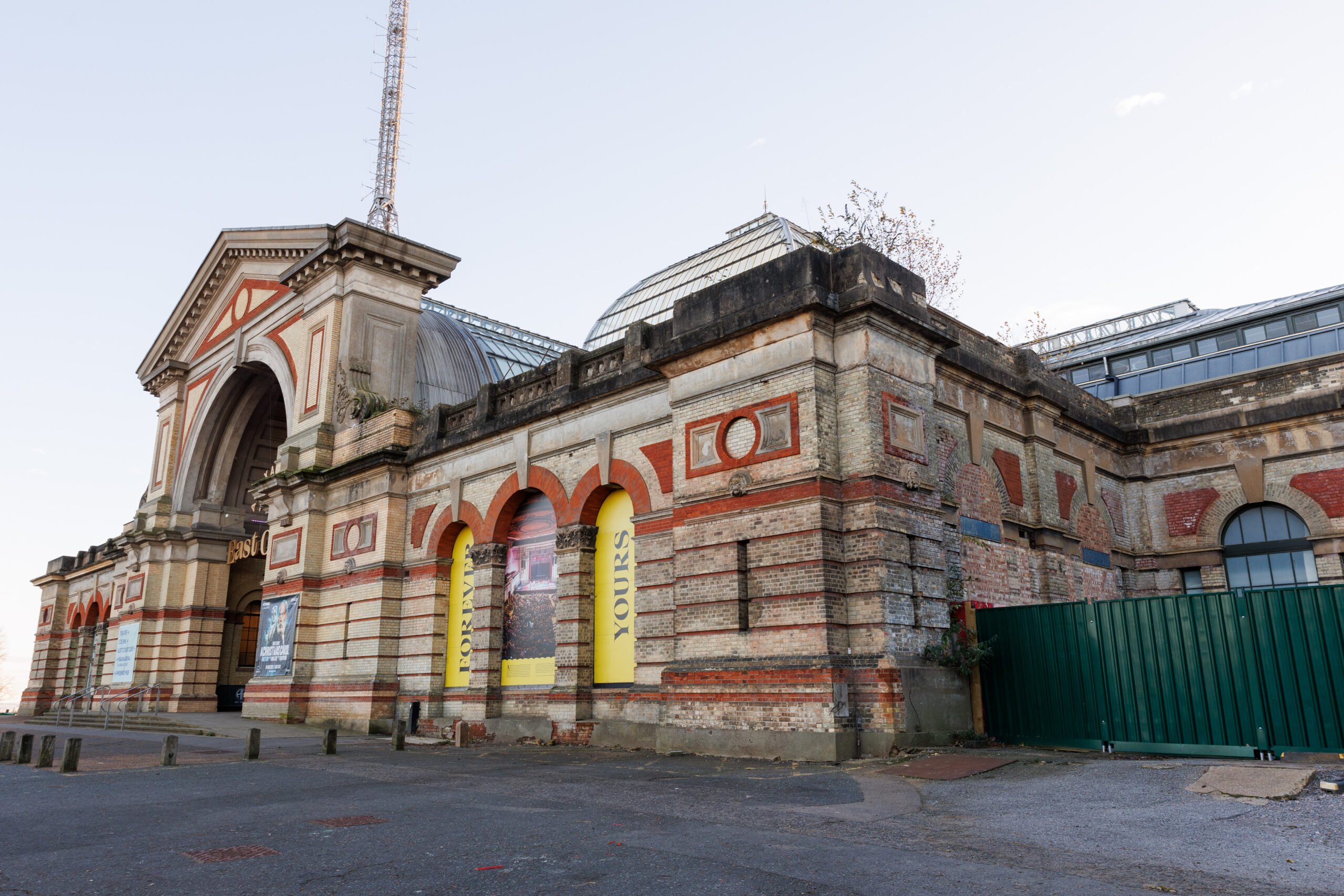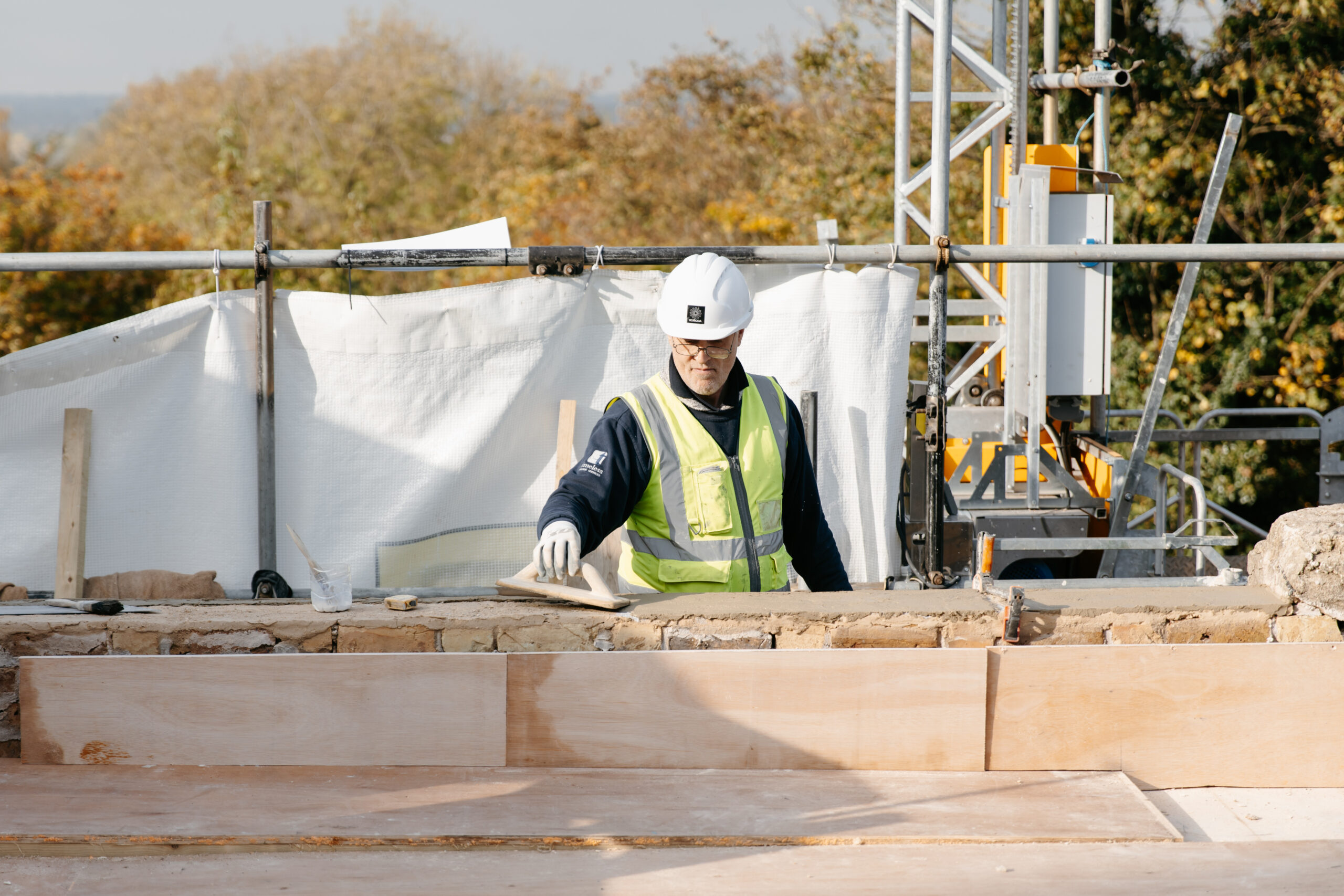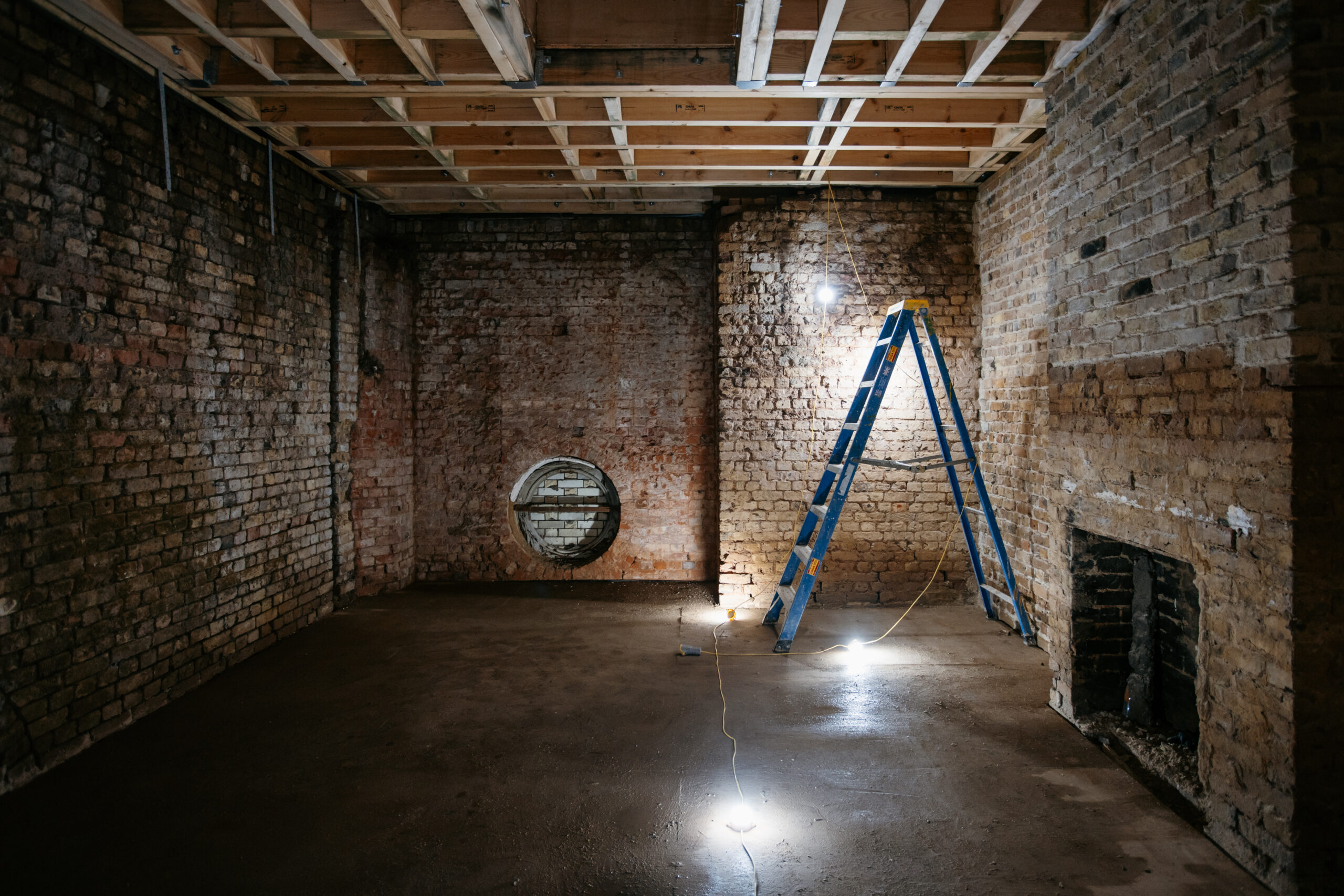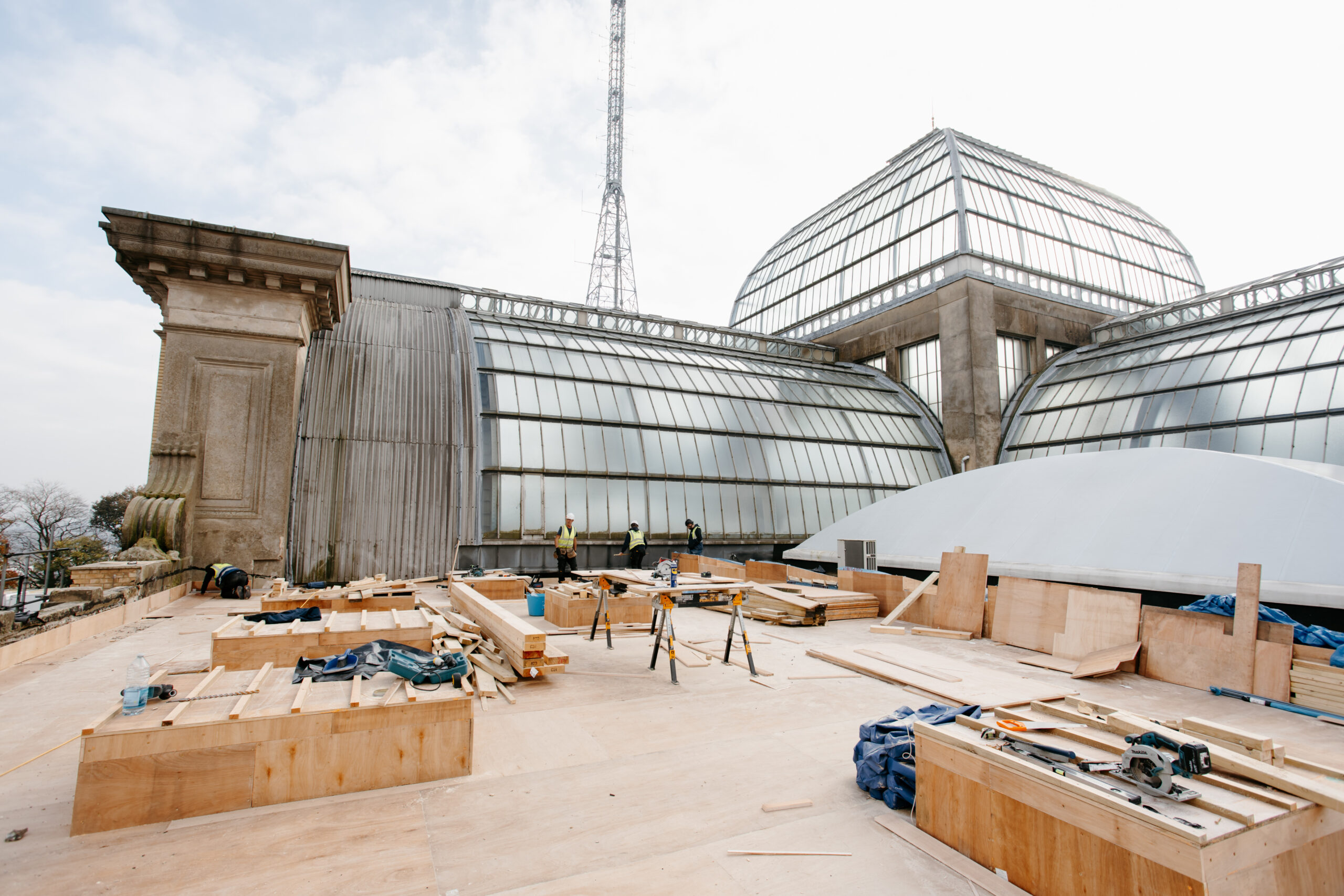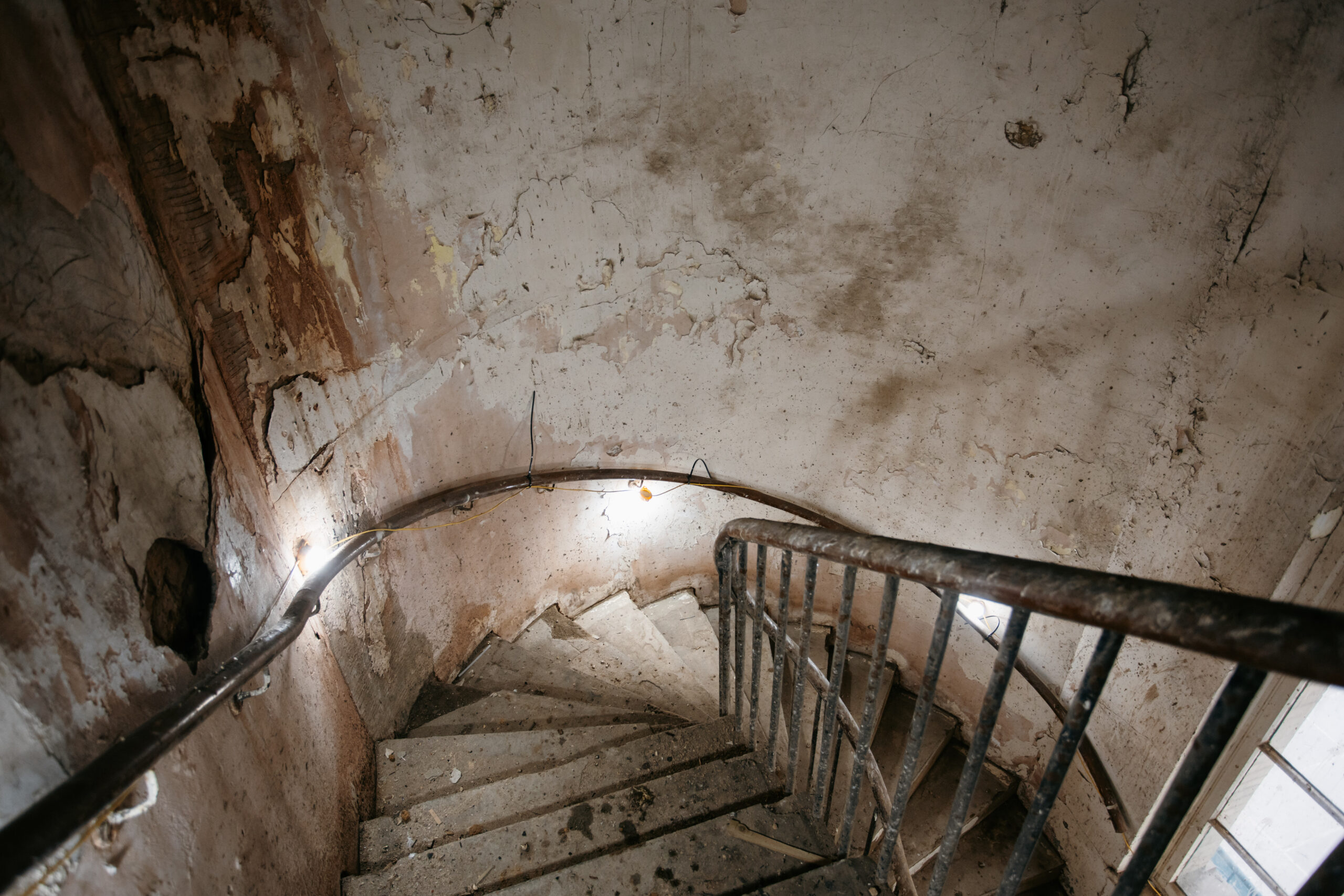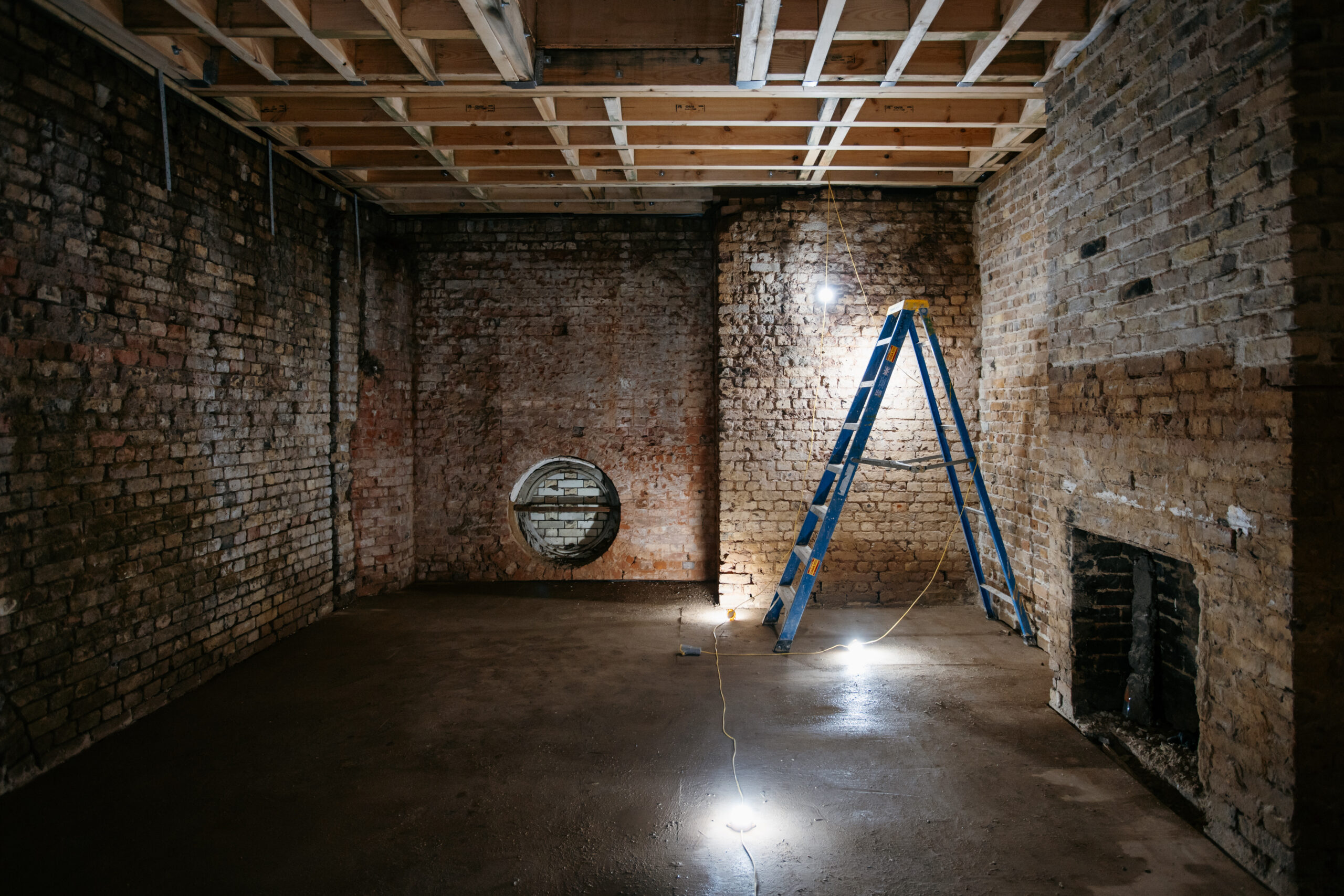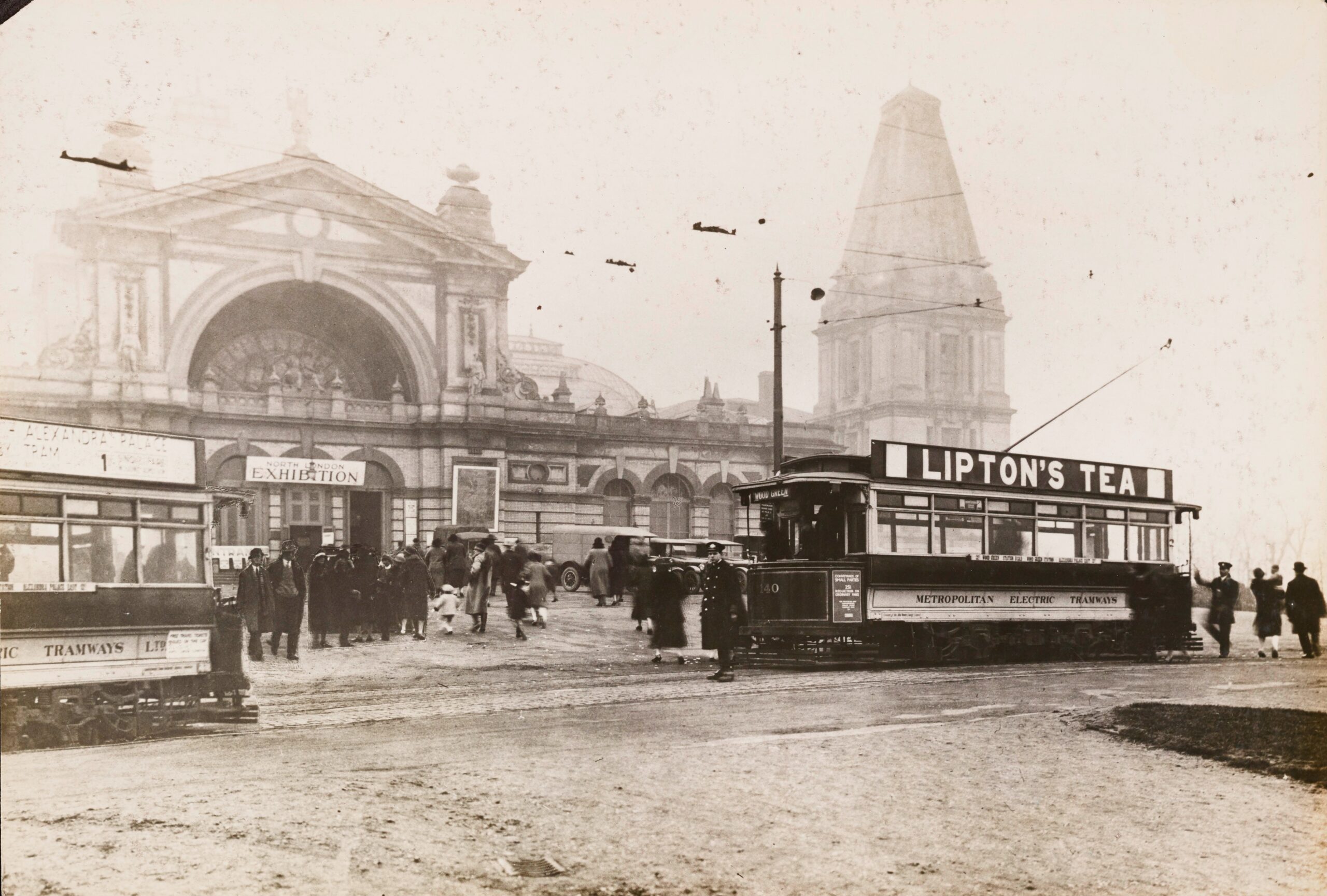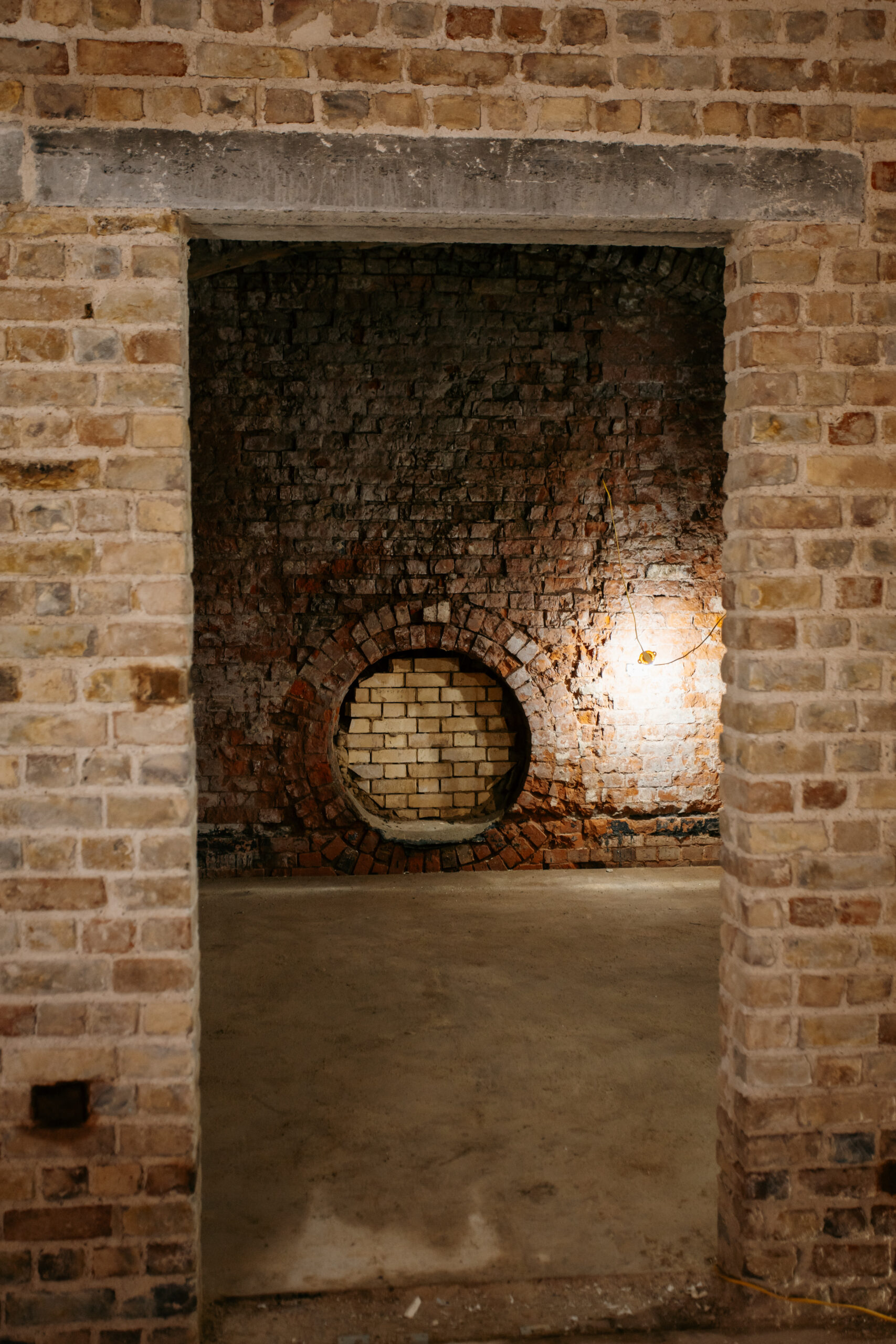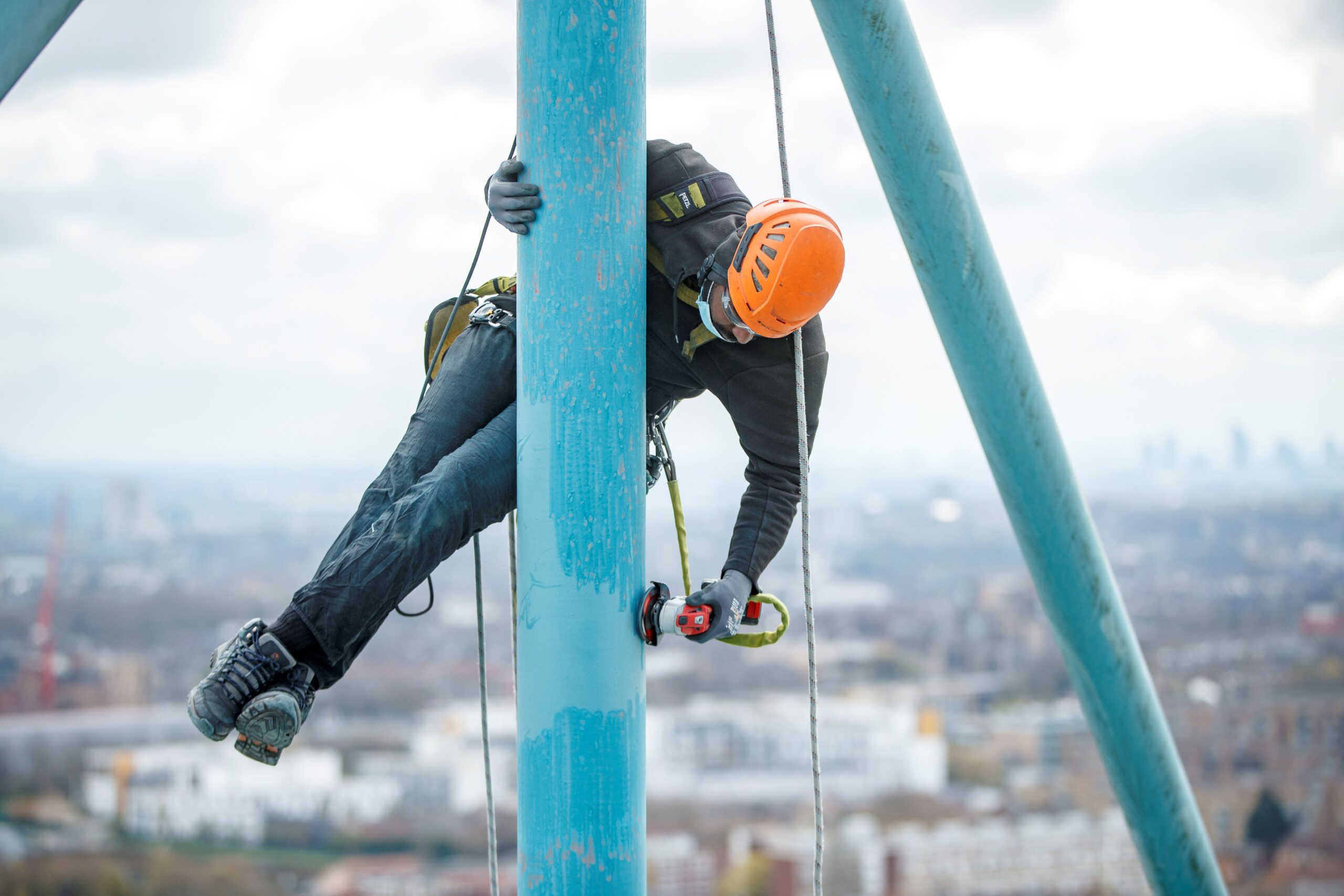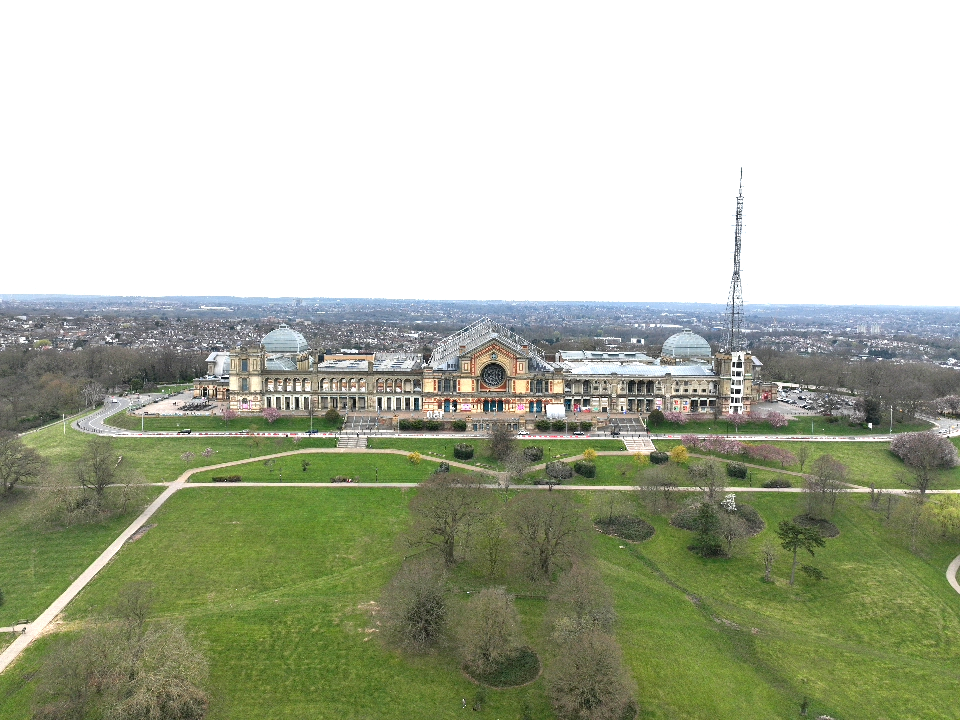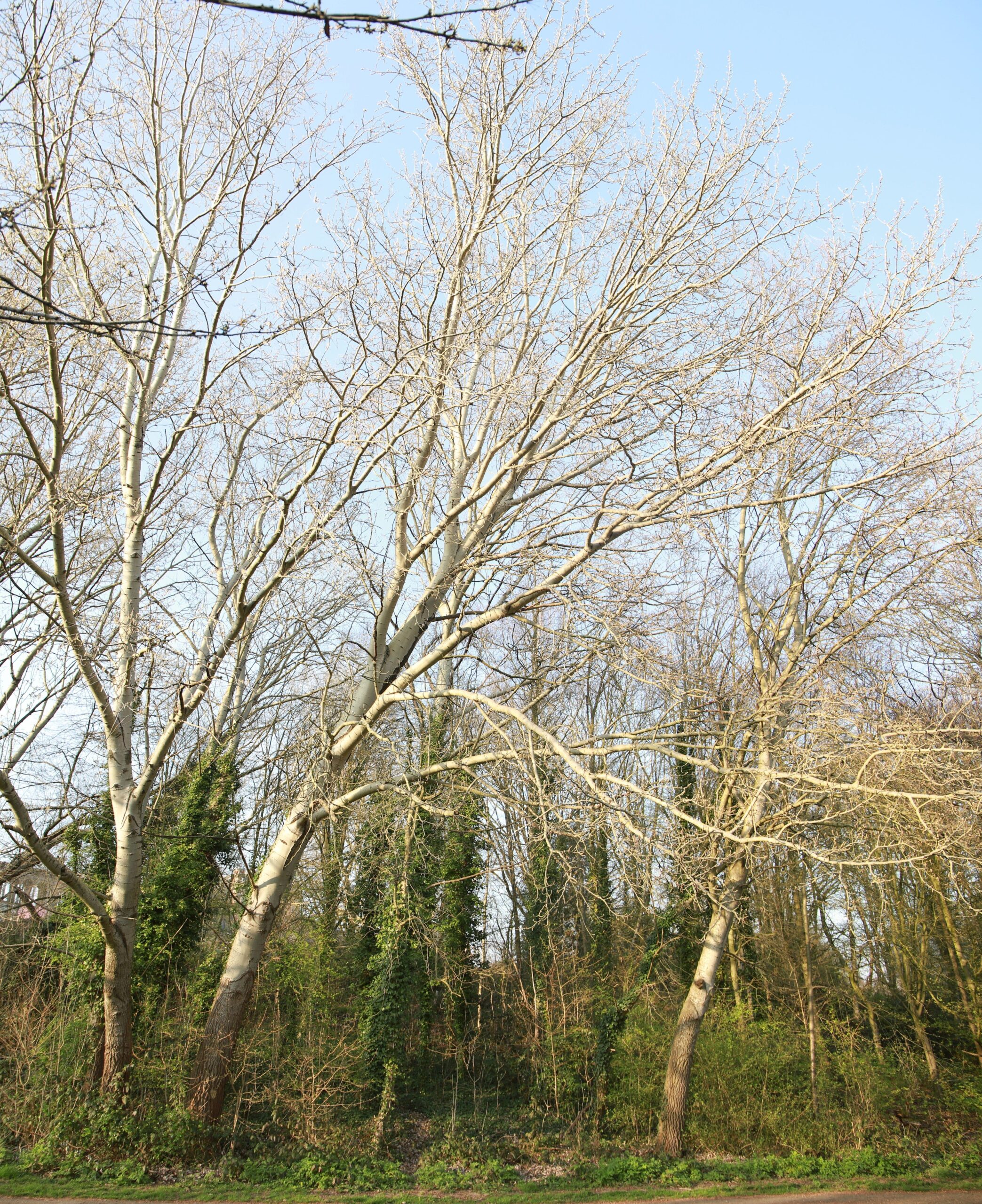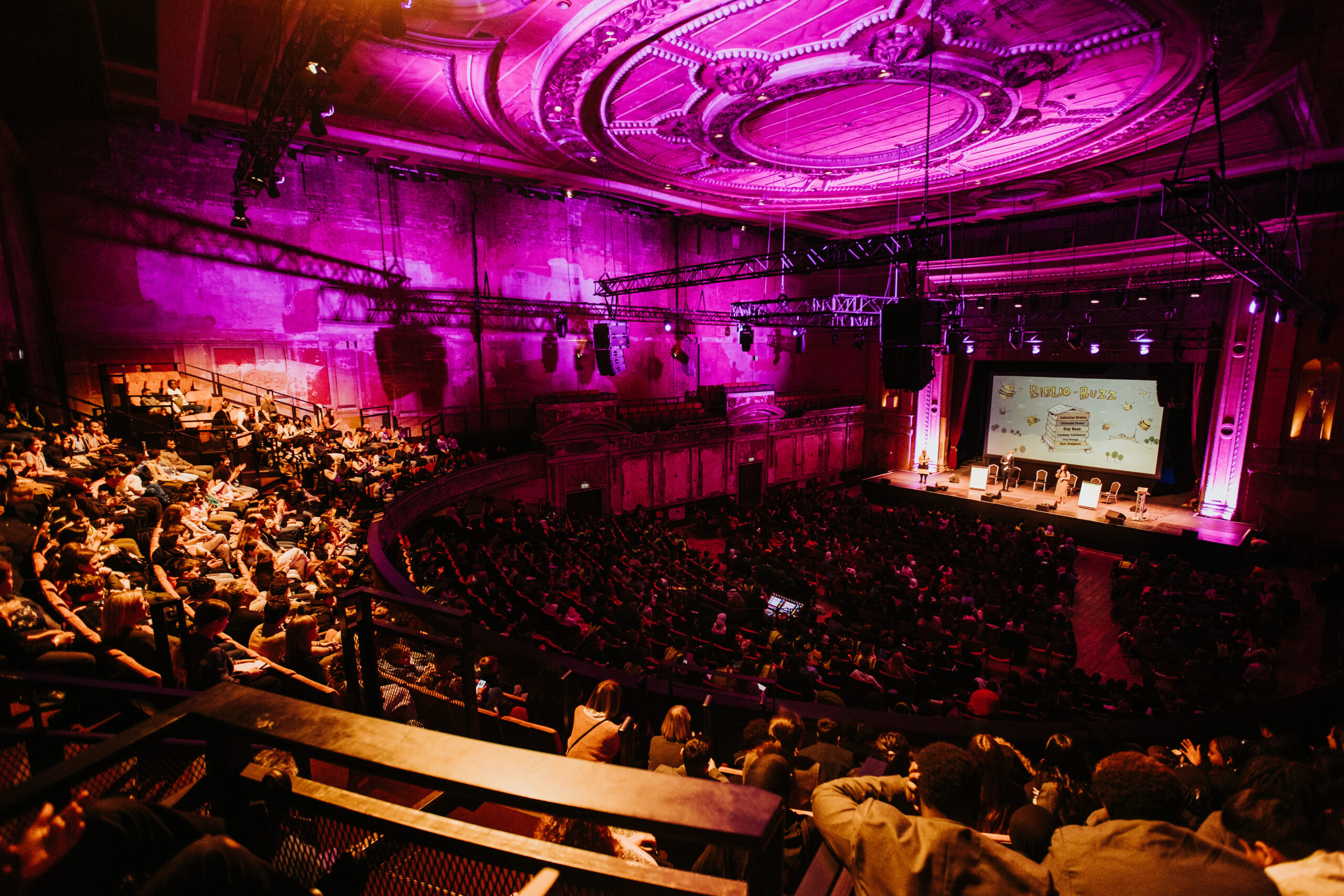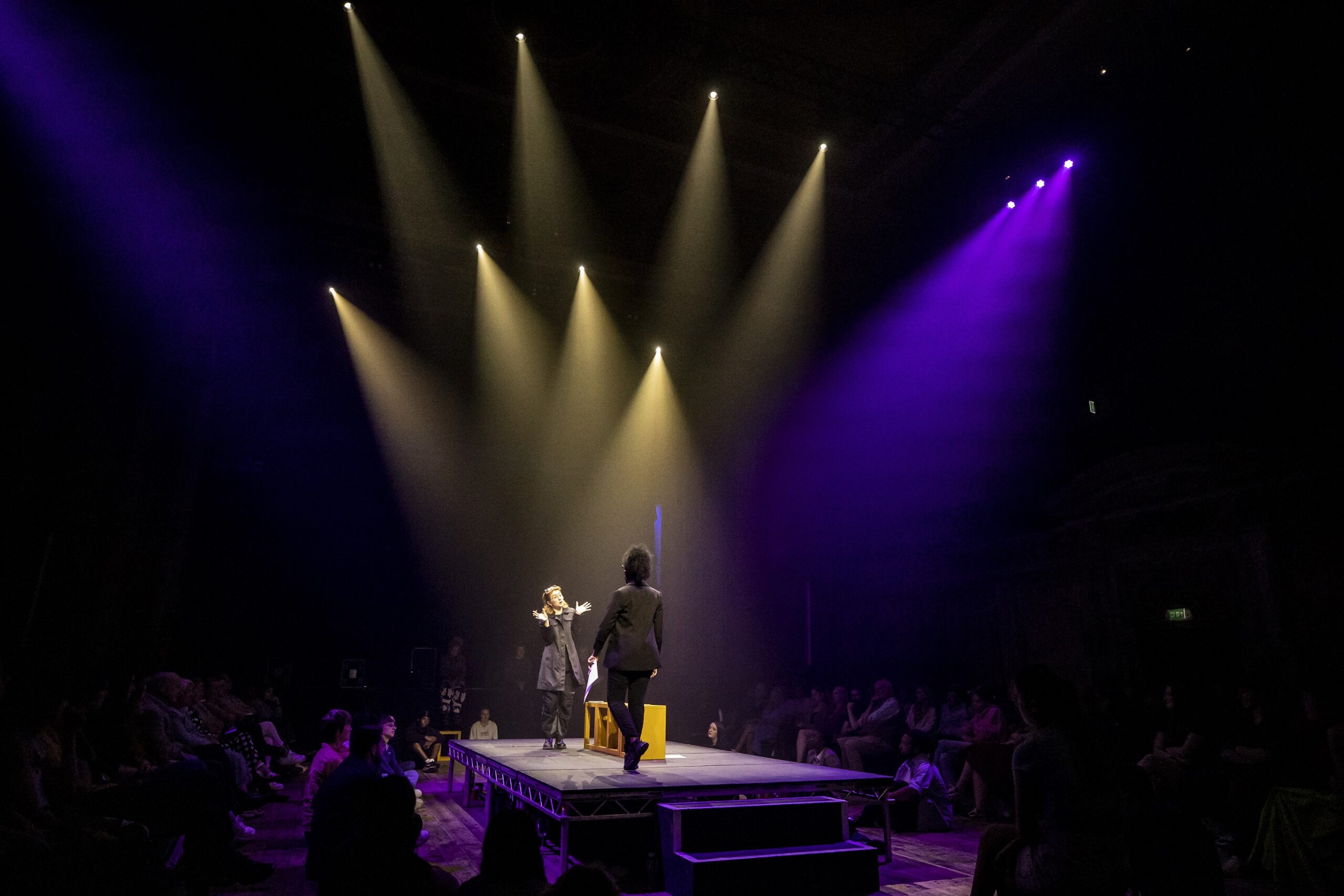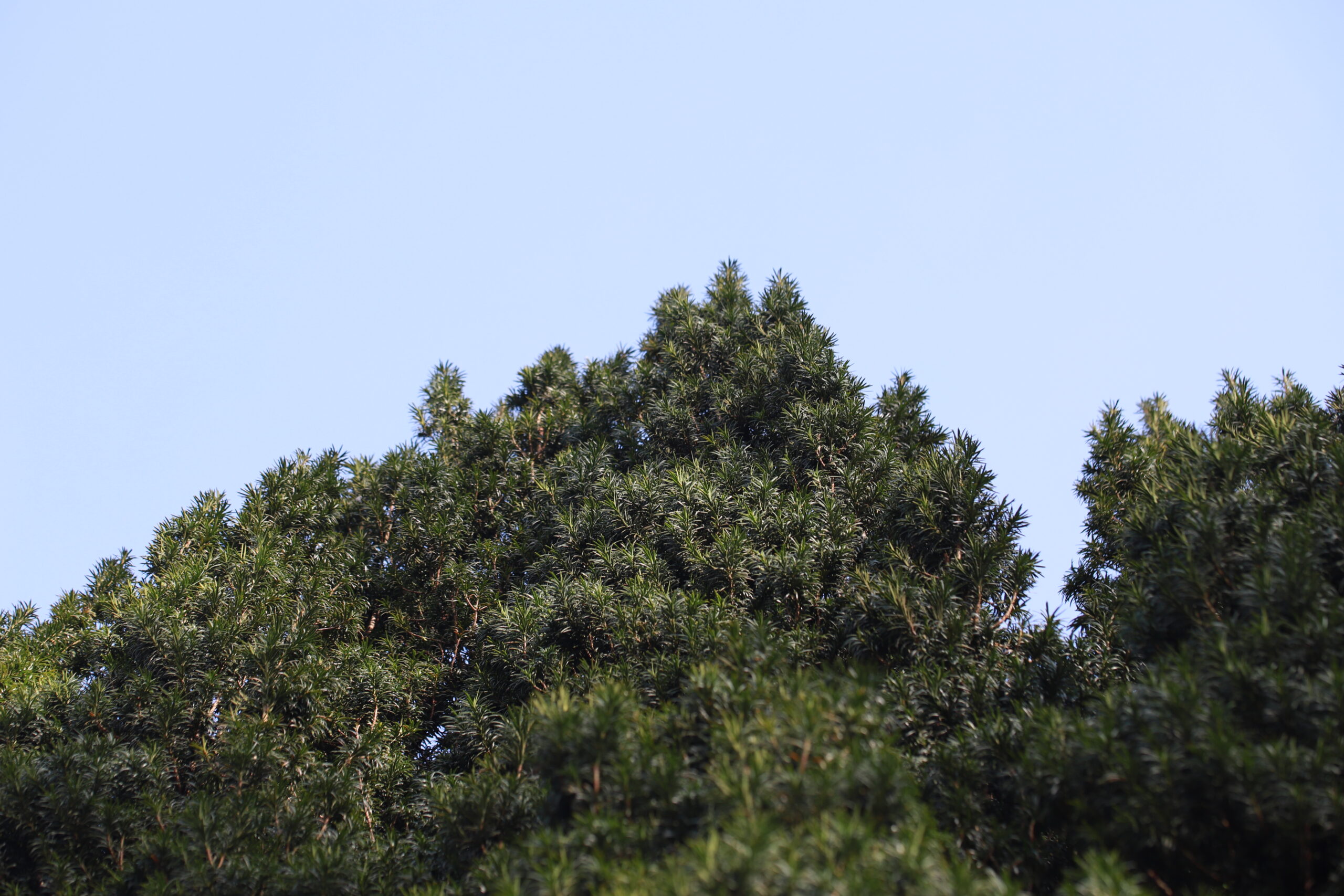Our major project to repair the Palace’s North East Office Building (NEOB) – our last truly inaccessible area in the seven acre building – is nearing completion.
Work began in February this year to stabilise the structure of our former administrative building, thanks to a £550,000 grant from Historic England. Decayed brickwork and timber have been removed, as have historic roof lanterns (which will be carefully restored in the next phase of works). New timber floors, walls and roof coverings have been installed. The scale and complexity of work, combined with discoveries that were not known at the start of the project – some internal walls were no longer in sound condition, for example – extended both the programme and the funds required; Historic England provided us with an additional grant of £195,000, and the project has taken a total of nine months.
With the block vacated since 1981, this work has allowed us to explore a disused and hidden area of the Palace. As we did, there were a number of interesting finds:
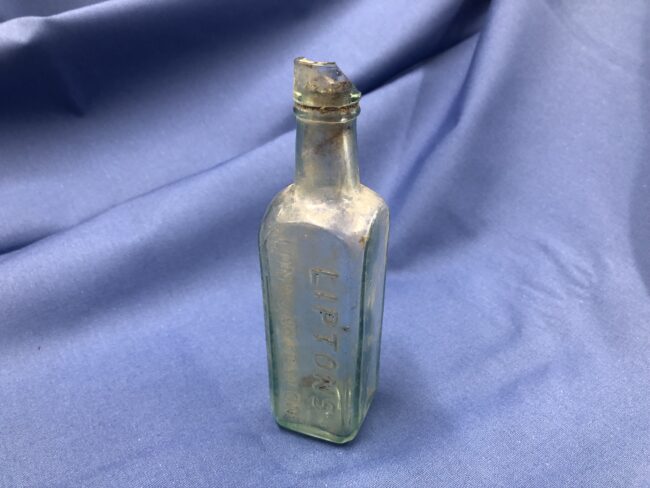
A Lipton’s drinks bottle from circa 1878. Our archive captures a picture of a Lipton’s advert on a tram outside our North East Office Building in the 1920s.
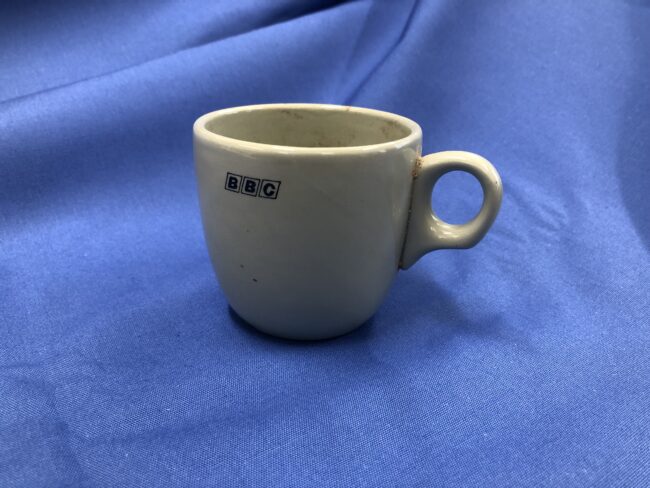
A BBC coffee cup with 1960s logo, no doubt used here when the NEOB was the home of the Open University production unit. The OU broadcast educational programmes from the Palace’s TV studios between 1971 and 1981.
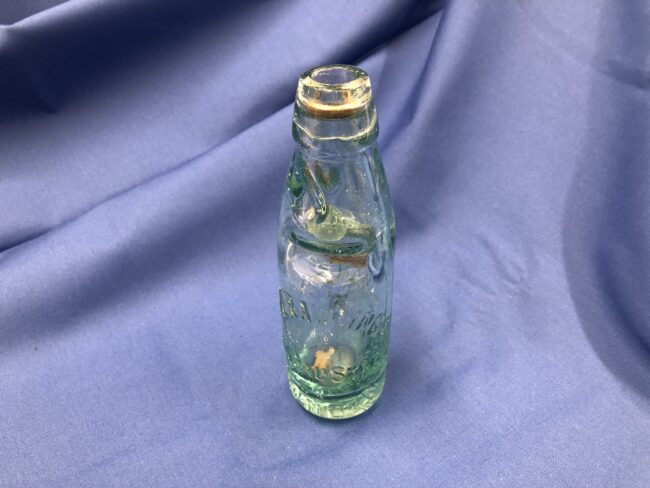
A Codd* bottle from HD Rawlings, in Nassau Street, Fitzrovia, London – an early example of a carbonated drinks bottle, dating back 150 years. Rawlings was taken over by R Whites in the 1890s.
* In 1872, soft-drink maker Hiram Codd of Camberwell, London, designed and patented a bottle designed specifically for carbonated drinks.[3] The bottle was designed and manufactured with thick glass to withstand internal pressure, and a chamber to enclose a marble and a rubber washer in the neck. The bottles are filled upside down, and pressure of the gas in the bottle forces the marble against the washer, sealing in the carbonation. The bottle is pinched into a special shape to provide a chamber into which the marble is pushed to open the bottle. This prevents the marble from blocking the neck as the drink is poured. Some older examples had the bullet shape of soda bottles.
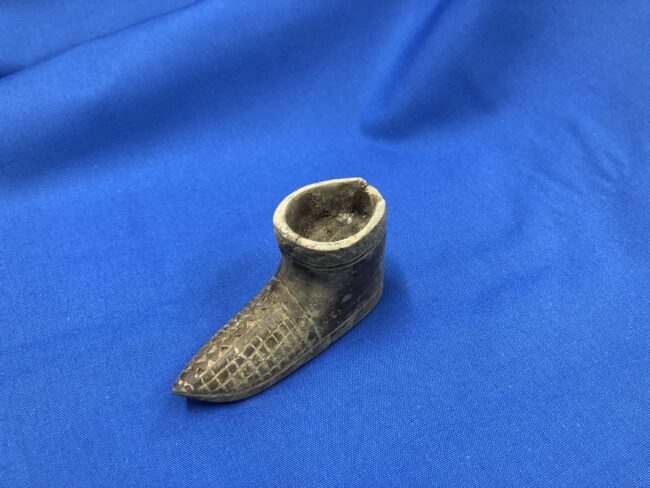
Finally…well, we are not quite sure what this tiny wooden shoe is?? If anyone out there knows, then please contact us with your suggestions!
What next for the North East Office Building? Firstly, the repair work needs to be completed, something we plan to happen before the end of the year. This will give us the chance to regularly access the building, from which point our ambition is to explore how we can bring it back into public use. This is something that, as a charity, will require us to source additional funding to realise.
The Office Building was used as far back as 1875, to house the ‘offices of the administrators’, a ticket office, porters facilities, costume room, and the Palace’s first Superintendent; and from 1970 serving as office space for the Open University. Its restoration is the next phase of our major restoration programme that saw the Palace’s Victorian Theatre successfully reopen in 2018 following 80 years of closure; alongside the transformation of the East Court, thanks to funding from the National Lottery Heritage Fund and Haringey Council.
In recent years the proportion of the Palace that remains out of use has been reduced from 40% to 29%. Restoration – and its associated benefits for visitors, local community, local economy and the Palace’s environmental footprint – is at the heart of the charity’s vision for the future.
